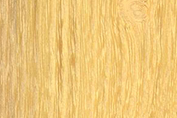2024 Copyright – KOCH GmbH | Graphics & conception with ❤ from the Lower Rhine – EHRENPLATZ
Wood and veneers for architects
Interesting facts about wood and veneers
Wood and veneers in sustainable architecture
In the world of architecture and interior design, wood and veneers play a central role in creating spaces that are not only aesthetically pleasing, but also functional and sustainable. These materials offer an unparalleled variety of textures, colors and finishes, allowing architects to create unique and customized solutions for any project.
The importance of wood in architecture
Wood has been a basic building block in architecture for centuries. Its natural beauty, combined with its structural integrity, makes it a preferred material for many architects. Wood is not only sustainable if it comes from responsibly managed forests, but also offers natural insulating properties that can contribute to the energy efficiency of buildings. This makes wood in particular, but also high-quality veneers, suitable for use in buildings.
The variety and flexibility of veneers
Veneers expand the possibilities of architectural design by providing a wide range of finishes and patterns that would not be possible with solid wood alone. They are produced by cutting thin sheets of high-quality wood and can be applied to various substrates to achieve the desired aesthetic. This technology makes it possible to use rare and expensive woods more efficiently and in a more environmentally friendly way.
Sustainability and environmental compatibility
Sustainability is a key aspect in the selection of materials in modern architecture. Wood and veneers from certified sources ensure that the materials are environmentally friendly and ethical. This not only helps to protect forests, but also increases the value of the finished project by using materials that are known for their low environmental impact.
Technological innovations and processing
Technological developments in the processing of wood and veneers have made it possible to integrate these materials into previously unimagined shapes and constructions. Modern processes such as CNC milling allow precise cuts and complex patterns that emphasize the natural beauty of the wood and at the same time enable innovative design solutions.
Interesting facts about wood and veneers
Areas of application for wood and veneers in architecture
The possible applications of wood and veneers in architecture are diverse and range from the outer shell of buildings to fine interior fittings. In exterior architecture, wooden façades offer a warm and inviting look that is both modern and timeless. Indoors, veneers make it possible to create spaces with a rich and luxurious feel without compromising on sustainability.
The role of wood and veneers in future architecture
Looking to the future, it is clear that wood and veneers will continue to play a decisive role in architecture. Their ability to combine warmth, beauty and sustainability makes them ideal materials for designing the buildings of tomorrow. In addition, the constant search for innovative applications and environmentally friendly processing methods encourages the development of new ways for architects to work with these timeless materials.
Wood and veneers offer an unsurpassed combination of aesthetics, functionality and sustainability, making them an indispensable part of modern architecture. By consciously selecting and using these materials, architects can create spaces that not only impress today, but also serve and inspire future generations.
























